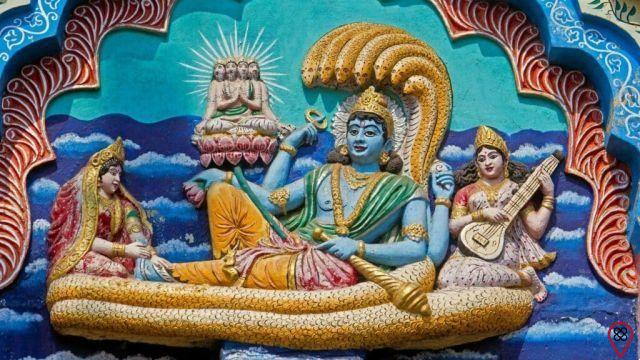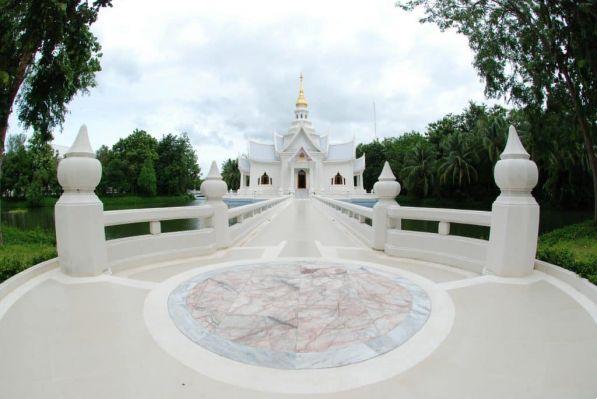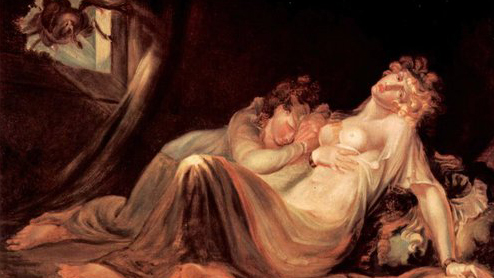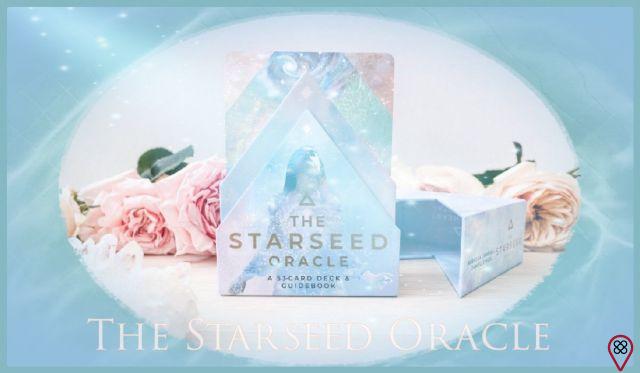When my son was approximately seven years old, he asked me an intriguing question: “Mom, where was I before I was born?” I gave him a very simple answer: "Son, you were in mommy's belly." He replied, "And where was I when you were in grandma's belly?"
Very surprised by the questions asked by a young child, I was left unanswered. I responded with another question: “Son, why do you want to know about these things? Did you hear anyone talking about it?” “No, mother”, he replied, “I just want to know about my life”.
My son's inquiries revealed to me not only his precocity, but also a curiosity that drives man's search for the meaning of life since the beginning of time, in the most different cultures of which we are aware. Trying to answer them requires each of us to have a deep knowledge of the process of hominization, at each time, in different historical contexts. every civilization, in line with your level of consciousness, tried to find answers to fundamental questions of its existence.
The myth, the religions, philosophical and scientific explanations contributed significantly to the formation of conceptions about the origin of the Universe, of life in general and, in particular, of man.

Myths are the first expressions of symbolic language used by man to explain the world around him. They are poetic and intuitive narratives that demonstrate a form of rationality of the human species with characteristics that are totally different from the logical-rational explanation.
Origin myths tell that the elements of nature, living beings and men were created by supernatural beings. Although these narratives were born in different cultures, they have a similar structure to each other, that is, they reveal a primitive phase of human consciousness, a fanciful way of explaining all the phenomena that influenced human life in the most remote times.
In this sense, they had an ordering function of thought and a regulator of society. Let us take, first, as an example a Greek myth:
Myth of the origin of life in ancient Greece
“In the beginning, nothing had form in the Universe. Everything was confused and it was not possible to distinguish the land from the sky or the sea. This nebulous abyss was called Chaos. How long did it last? To this day it is not known.
A mysterious force, perhaps a God, decided to put this into order. He started by gathering the material to shape the Earth's disk, then hung it in the void. Above, he dug the celestial vault, which he filled with water and light. Green plains then stretched across the earth's surface and rocky mountains rose above the valleys. The water of the seas came to surround the lands. Obeying the divine order, the waters penetrated the basins to form lakes, torrents descended from the slopes and rivers meandered between the ravines.
Thus, the essential parts of our world were created. They only waited for their inhabitants. The stars and gods would soon occupy the sky; then, at the bottom of the sea, the fish with shiny scales would establish their abode, the air would be reserved for the birds and the land for all other animals still wild.
It took a couple of deities to generate new gods. It was Uranus (the sky) and Gaia (the earth) that brought a lot of strange beings into the world.”
Reference:
Pouzadoux, Claude. Tales and Legends of Greek Mythology. São Paulo: Companhia das Letras, 2001, 15-16.
Even recognizing that Greek thought represents the original mark of Western rationality, we cannot ignore that the Greeks, for a long time, preserved their mythical explanations, giving them a sacred and cultural character, in such a way that these explanations influenced the way of acting. and thinking about that people, regardless of the changes that took place in society at the time.
We cannot deny the meaning and importance of myths for the formation of the identity of each civilization and for the construction of its culture. In a very brief way, we highlight below other myths of origin.
In Hinduism's view, in India, a divine triad is responsible for each phase of life: Vishnu (god responsible for the conservation and sustenance of the world) preserves it, while Shiva destroys it, inaugurating new cycles in the world created by Brahma.

The latter, by inventing the world and things, gives rise to two other entities, Gayatri and Purusha, the latter being responsible for creating men. For the inhabitants of Mesopotamia, heaven and earth were created by Abzu (male element) and Tiamat (female element). Tiamat created the sky, from which was born Ea (magical principle) who begat Marduk. This one defeated the other gods and split Tiamat's body, thus separating Heaven from Earth and, with the blood of a defeated monster, produced the first man.
The Bible, the guiding and regulating book of the lives of Jews and Christians, presents in Genesis, the first book of the Old Testament, the narrative of the origin of the world and of man with an allegorical language similar to the Mesopotamian accounts: “In the beginning, God created the heavens and the earth. Now the earth was empty and vacant, darkness covered the abyss, a wind from God was hovering over the waters.
God said, 'Let there be light' and there was light. God saw that the light was good, and God separated light and darkness. God called light 'day' and darkness 'night'. There was an afternoon and a morning: first day. (…) God said: 'Let the waters boil, a swarm of living beings and let the birds fly above the earth, before the firmament of heaven' and so it was done. (…) God created man in his image, in the image of God he created him, male and female he created them.” The second chapter of Genesis brings an earlier account of creation: “Then Yahweh God fashioned man out of the clay of the ground, and he breathed into his nostrils the breath of life, and man became a living being.”
Among the American peoples, the Mayans, pre-Columbian people who inhabited the Mesoamerica region, explained the origin of the world in thirteen stages. In the first, Hunab Ku, the one god, made himself and created heaven and earth. In the thirteenth, he took earth and water, mixed them, and molded the first man. But the Mayans considered that several worlds had succeeded each other and that each one of them ended as a result of a flood.
In other Amerindian religions, cosmic beliefs and myths are also related to the elements of nature. For the Incas, the place of creation of man by the god Huiracochá was located near Lake Titicaca, near Tiahuanaco. The Aztecs placed in Teotihuacan the cosmic catastrophe that put an end to the previous age. In this place, the gods gathered to deliberate who would throw themselves into the fire to transform themselves into the Sun, which was achieved by the humble Nanahuatzin.
In España, the cosmogony of the indigenous also refers to a creator of heaven, earth and all beings that inhabit it. A good example is the sublime and beautiful Guarani myth:
Guaraní myth of the origin of life
At the beginning of the world there was great darkness, in those times when heaven and earth did not yet exist. It was little by little that the first demiurge, Nhamandu, our father, the one who has better ears and eyes than the common people. It emerged alone, it unfolded itself. He grew up there in the dark, without a father or mother.

(…) And he also made his two palms. They say that in one of them he held a stick and in the other a bunch of flowers. With the stick he would form the earth, which until then did not exist. He also wore a magnificent headdress, a shiny headdress. It seems that flowers came out of its feathers and that from these flowers the first hummingbird emerged, which was there, hovering in the air (…)
Everything was still very dark, but Nhamandu had his own light. It was as if a sun was inside her heart. It was his light of knowledge, with which he shone while he was there, amid the winds of earlier times. He knew that it was necessary to form the heaven and earth that did not yet exist, but he thought of doing something much more important first.
Nhamandu worried about the people who would come later. He wanted his knowledge to reach human beings and not be lost. So that this could happen, Nhamandu decided to make the speech, but an elaborate, special speech. This speech was his own knowing, which came from within that inner sun. And that knowing was love. With that, Nhamandu imagined that the living could live better in the future. With speech and love.
When his enlightened speech emerged, he went on to do other things that would be important for the emergence of the world. He started by training the other Nhamandu. From his wisdom, he made other deities similar to him (...) with his thought, he made the earth appear right there, from the tip of that magical instrument (the stick).
But it was still necessary to put things on the earth, which until then was very new and completely empty. In the center of the world, he placed a great blue palm tree, indestructible. And then he placed four more palm trees at each of the four corners. These first palm trees served to tie the earth, to make it stable.

This is how the world began to emerge, until it gradually gained the aspect we know today (…).
This world that was beginning to exist was better: there were no diseases, wars and problems like ours. It is said, however, that a serpent spoiled it (…) after the earth was already formed, Nhamandu decided to withdraw into the deep sky. He left his assistants here, who were supposed to take care of the people so that they wouldn't forget their knowledge. Tupã is one of them, one of the main (...)
Reference:
Cesarino, Peter. Indigenous stories from ancient times. São Paulo: Claro Enigma, 2015.p.15-19
Finally, it is necessary to emphasize the importance of the mythical narrative as a starting point for philosophical and scientific knowledge. Ancient inventions such as gnomons, clocks that measure themselves from the displacement of sunlight, are related to the way of understanding natural laws expressed in mythical narratives. It was to understand which of the gods predominates in a given region that the indigenous people used the sundial, which, in turn, had already been used by peoples distant in time and space (Egypt, China, Greece), at the time when knowledge mythological imposed itself on any other.
Did you know, my dear reader, that the archaic myths, although they appeared in immemorial times, cross the centuries and, in a certain way, continue to influence the journey of all peoples of East and West today? Have you noticed that many myths, with their symbols and rituals, guide and shape, whether beneficially or harmfully, our everyday life today?
You may also like
- Dive into the details of Greek mythology
- Explore every part of Spanish folklore
- Find a way to discover the meaning of life
Look at the soap operas and films you watch, the personalities you admire, the rites of passage in which you usually participate, the artistic and sports attractions that most mobilize and move you. It's a good reflective exercise.

























